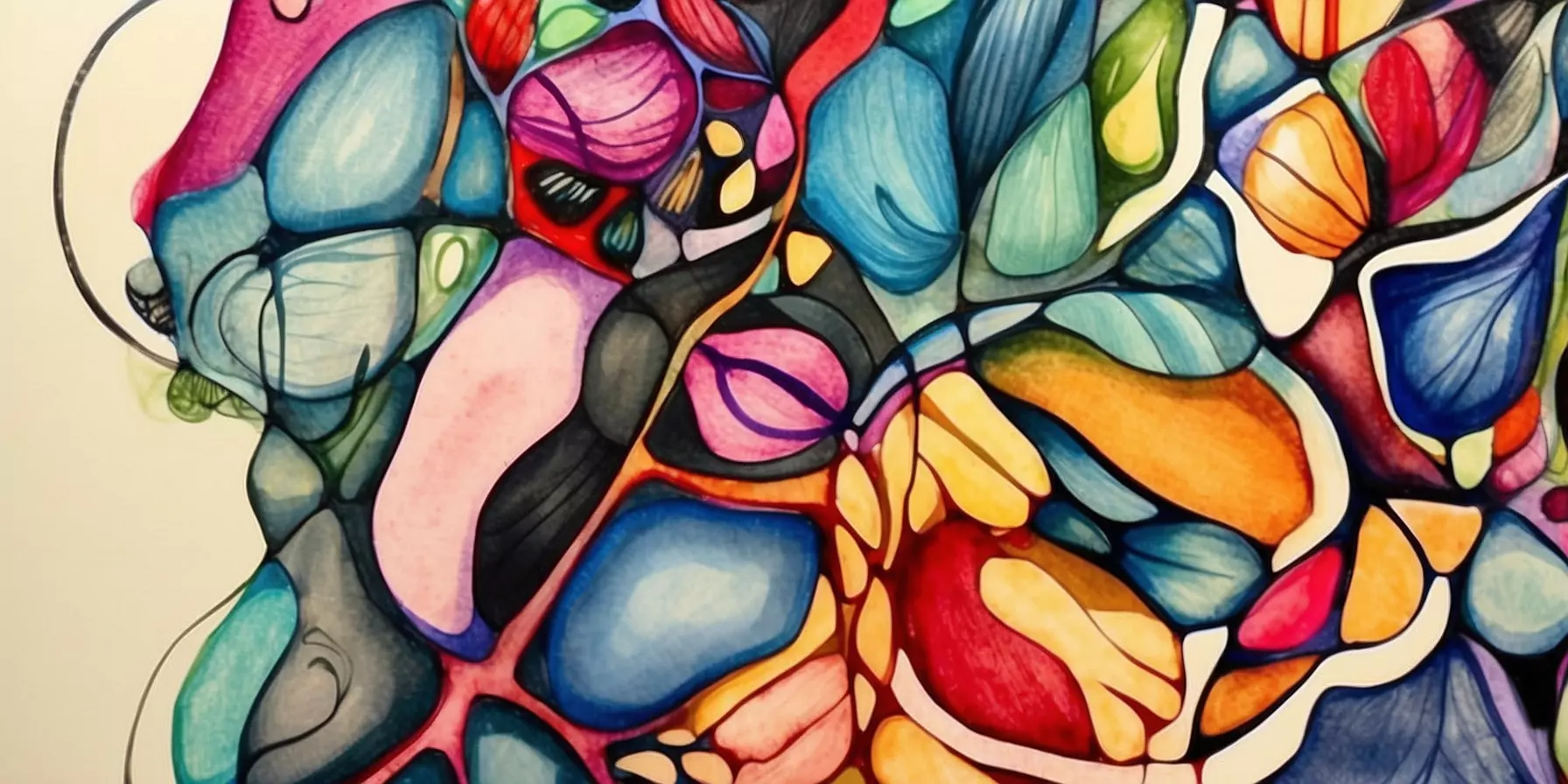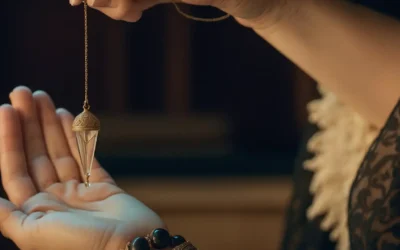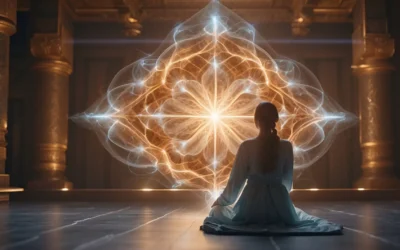Neurographic art, a unique form of artistic expression, blends psychology and creativity to produce stunning visual masterpieces. It’s not just about making beautiful artwork; it’s a therapeutic process that stimulates the brain, unlocks boundless imagination, and fosters catharsis. Originating in Russia, neurographic art has quickly gained popularity worldwide for its ability to alleviate stress and anxiety while fostering personal growth. Through simple yet profound techniques, individuals can channel their emotions onto paper, resulting in mesmerizing patterns and designs that reflect their innermost thoughts.
This blog post delves into the captivating world of neurographic art, exploring its history, benefits, and practical applications. Whether you’re an artist seeking new inspiration or someone looking for a creative outlet that promotes mental well-being, neurographic art offers an exciting journey of self-discovery through vibrant strokes and intricate lines.
- What is Neurographic Art?: Defining and explaining the concept of neurographic art
- The Neurographic Line Technique and Its Significance
- The Creative Process of Neurographic Art
- The Therapeutic Benefits of Neurographic Art
- Intuition and Reflection in Neurographic Art Creation
- The Role of Curves and Smooth Connections in Neurographica
- Exploring the Three Methods of Neurographic Art
- Encouragement for Non-Artists to Explore Neurographica
- Summary
- Frequently Asked Questions
What is Neurographic Art?: Defining and explaining the concept of neurographic art
Combining Psychology and Creativity
Neurographic art is a unique form of creative expression that combines psychology and creativity. Through this innovative process, individuals create intricate designs using free-flowing, non-stop lines. These continuous lines are not pre-planned or consciously controlled, allowing for an organic outpouring of creativity onto the canvas. This harmonious blend of artistic freedom and psychological exploration sets neurographic art apart as a powerful tool for self-discovery and emotional healing.
Neurographic art offers a dynamic platform where individuals can delve into their subconscious mind through the act of drawing unrestricted lines. It enables them to tap into their emotions, thoughts, and innermost feelings without any limitations or preconceived notions. By embracing this unstructured approach to artistic expression, participants can unlock hidden aspects of their psyche and emotions while engaging in a deeply immersive creative process.
The therapeutic potential of neurographic art lies in its ability to foster introspection by encouraging individuals to explore their mental landscapes without judgment or restraint. As they navigate the fluidity of line creation, they may uncover insights about themselves that were previously obscured from conscious awareness.
Stress Relief and Self-Discovery
Engaging in neurographic art can be remarkably cathartic as it provides an avenue for releasing pent-up emotions and tension. The rhythmic motion involved in creating uninterrupted lines allows individuals to channel their stressors into the artwork, resulting in a sense of relief and emotional release.
Moreover, the non-linear nature of neurography encourages participants to embrace spontaneity while fostering mindfulness during the creative process. This heightened state of present-moment awareness promotes relaxation and helps alleviate anxiety by redirecting attention away from worries about the past or future.
In addition to stress relief, neurographic art serves as a potent catalyst for self-discovery by unveiling aspects of one’s personality that may have been dormant or overlooked. As individuals immerse themselves in this expressive practice, they may encounter unexpected insights about their values, desires, fears, or sources of inner strength—ultimately leading them on an enlightening journey toward greater self-awareness.
The Neurographic Line Technique and Its Significance
Continuous Lines
Neurographic art primarily revolves around the use of continuous lines. These lines are drawn without lifting the marker from the paper, allowing for a seamless flow of movement. This technique is essential as it enables individuals to tap into their subconscious mind and express their thoughts without interruption. By using continuous lines, artists can delve into a state of uninterrupted creativity, fostering a deep connection between their conscious and subconscious selves.
The continuous nature of these lines plays a crucial role in unlocking hidden emotions and thoughts. As individuals engage in drawing these unbroken lines, they enter a meditative state that encourages them to explore their innermost feelings. This process facilitates self-reflection and introspection, leading to the revelation of emotions that may have been buried within the subconscious mind. Through this technique, artists can uncover suppressed sentiments or unresolved issues, providing an avenue for emotional release and healing.
Uncovering Subconscious Thoughts
One of the primary purposes of neurographic art is to allow individuals to explore their subconscious thoughts through artistic expression. The line technique serves as a bridge between the conscious and subconscious mind, enabling artists to access deeper layers of their psyche. As they create intricate patterns with continuous lines, they are able to tap into underlying emotions and experiences that may not be readily accessible through traditional forms of communication or self-expression.
The Creative Process of Neurographic Art
Mindfulness and Relaxation
Neurographic art involves the use of repetitive patterns and colors. This process encourages mindfulness and relaxation, allowing artists to enter a state of creative flow. By focusing on repetitive movements while creating intricate designs, individuals engage in a form of active meditation. This mindful approach helps reduce stress and anxiety, promoting overall mental well-being.
Engaging in the drawing process of neurographic art allows individuals to immerse themselves in the present moment. As they meticulously work on their artwork, they become more attuned to their thoughts, emotions, and physical sensations. This heightened awareness fosters a sense of calmness and inner peace. Through this artistic practice, individuals can experience relief from daily pressures while enhancing their concentration and cognitive abilities.
Neural Pathways Rewiring
The act of making neurographic art has been linked to rewiring neural pathways in the brain. When an individual engages in this creative process, new connections are formed within the brain’s neural network. As artists experiment with different shapes, lines, and colors during the creation of neurographic art pieces, they stimulate various regions of their brains associated with creativity and problem-solving.
By continuously challenging oneself through neurographic art projects, individuals strengthen existing neural pathways while also forging new ones. This dynamic activity contributes to enhanced cognitive flexibility and adaptability as it encourages the brain to explore unconventional ideas and thought patterns.
Neuroscientific research supports that engaging in artistic endeavors such as neurographic art can have profound effects on one’s emotional regulation capabilities by influencing neurotransmitter levels associated with mood regulation.
The Therapeutic Benefits of Neurographic Art
Reducing Anxiety and Promoting Mental Well-being
Neurographic art has been found to have therapeutic benefits in reducing anxiety and promoting mental well-being. Engaging in the creative process of neurographic art allows individuals to focus on the present moment, which can help alleviate feelings of anxiety. By concentrating on the repetitive patterns and movements involved in creating neurographic art, individuals may experience a sense of calmness and relaxation. This meditative aspect of neurographic art can be particularly beneficial for those dealing with stress or anxious thoughts. Moreover, the act of creating something visually appealing through neurographic art can bring a sense of accomplishment, contributing to an overall improvement in mental well-being.
Neurographic art provides a unique avenue for emotional expression and self-awareness. Through this form of artistic expression, individuals are able to convey their emotions visually without relying solely on verbal communication. The intricate lines and shapes created during the process often reflect one’s inner thoughts and feelings, allowing for a deeper exploration of one’s emotional state. As individuals engage with neurography, they may gain insights into their own emotions, leading to increased self-awareness and understanding.
Forming Catharsis through Art Therapy
Art therapy is a recognized method used by mental health professionals to support individuals in addressing various emotional challenges or psychological distress. Neurographic art has emerged as an effective tool within the realm of art therapy due to its capacity for facilitating cathartic experiences. The process itself encourages participants to immerse themselves fully in their artwork while embracing spontaneity and creativity without judgment.
Incorporating neurography into art therapy sessions offers clients an outlet for processing difficult emotions or experiences through visual representation rather than verbal dialogue alone. This non-verbal approach allows individuals who may struggle with articulating their feelings verbally to express themselves creatively instead.
Intuition and Reflection in Neurographic Art Creation
Emphasis on Intuition
Neurographic art emphasizes the importance of intuition in the creative process. When creating neurographic art, individuals are encouraged to tap into their intuition rather than relying solely on logic or preconceived ideas. This allows for a more organic and authentic expression of one’s inner thoughts and emotions. By embracing intuition, artists can explore new ways of thinking and problem-solving, leading to unique and deeply personal artistic creations.
Neurographic art provides a platform for individuals to unleash their creativity without being constrained by conventional thought patterns. Through this approach, artists can unlock new insights about themselves and the world around them. By allowing their intuition to guide the creative process, individuals can break free from traditional artistic norms and discover innovative ways to represent their thoughts and emotions through art.
Encouragement of Reflection
In addition to emphasizing intuition, neurographic art also encourages reflection on one’s emotions and thoughts. This reflective aspect of the artistic process enables individuals to delve deeper into their subconscious feelings, uncovering layers of emotion that may not be immediately apparent. As artists engage in neurography, they have an opportunity to contemplate the intersections between their conscious minds and underlying emotions.
Through reflection during neurographic art creation, individuals gain a heightened awareness of their own thought processes as well as a greater understanding of the complexities within themselves. This introspective practice fosters self-discovery by providing a visual representation of internal thought patterns that might otherwise remain hidden from view. By engaging with these representations on paper or other surfaces, artists create tangible connections between their conscious reality and subconscious feelings.
The Role of Curves and Smooth Connections in Neurographica
Symbolism of Curves
Curves play a significant role in neurographic art, symbolizing harmony and fluidity. When incorporated into the artwork, curves evoke a sense of flow and rhythm, representing the interconnectedness between various elements within the piece. By using curves, artists can convey a feeling of balance and grace, creating an aesthetic that is visually pleasing and emotionally calming.
Neurographic artists often utilize curved lines to depict organic forms such as waves, petals, or natural landscapes. These flowing shapes not only contribute to the overall beauty of the artwork but also serve as a visual representation of tranquility and unity. For example, when drawing a serene landscape scene, incorporating gentle curves can evoke feelings of peace and relaxation in both the artist and the viewer.
Smooth connections are another essential aspect of neurographic art creation.
Representing Interconnected Thoughts
In neurographica, smooth connections hold deep symbolism as they represent the interconnectedness of thoughts. By utilizing seamless transitions between different elements or patterns within their artwork, artists communicate how ideas flow harmoniously from one to another. This portrayal serves as an embodiment of mental coherence and clarity.
When creating neurographic art pieces with smooth connections between various components, artists aim to illustrate how thoughts interact with each other in a continuous manner without abrupt interruptions or dissonance. This cohesive depiction fosters a sense of wholeness and integration within the artwork while promoting mental well-being for both creators and viewers alike.
Exploring the Three Methods of Neurographic Art
Method 1: Intricate, Detailed Designs
Neurographic art, in its first method, involves creating intricate and detailed designs. Artists use a series of interconnected lines to form complex patterns that represent the neural connections in the brain. These designs often start with a single continuous line that evolves into an intricate network of curves and shapes. This method allows artists to express their creativity while also promoting a sense of focus and concentration. The process of drawing these intricate designs can be meditative, calming the mind and allowing for self-expression through art.
Neurographica’s first method encourages artists to explore their creativity by focusing on creating elaborate patterns using connected lines. For example, individuals may begin with a simple shape or outline and then gradually add more details by intertwining various lines until they form an elaborate design.
Method 2: Emotion-Enhancing Color
In contrast to the first method, neurographic art’s second technique emphasizes using color to enhance emotional expression within the artwork. By incorporating vibrant hues or subtle shades into their creations, artists can convey specific emotions or moods through their neurographic pieces. Colors play a significant role in expressing feelings such as joy, sadness, tranquility, or excitement within neurographic artworks.
Method two enables artists to infuse deeper emotion into their creations by strategically selecting colors that resonate with them emotionally. For instance, an artist might use warm tones like reds and oranges to depict passion or energy in their artwork while opting for cool blues and greens to evoke feelings of calmness or serenity.
Method 3: Holistic Approach
The third approach in neurographic art combines elements from both previous methods for a holistic creative experience. In this comprehensive technique, artists integrate intricate designs from method one with emotion-enhancing color palettes from method two to create well-rounded artworks that are visually captivating yet emotionally resonant.
Encouragement for Non-Artists to Explore Neurographica
Inclusive Practice
Neurographic art is a form of creative expression that anyone can engage in, regardless of their level of artistic skill. Unlike traditional art forms that may require technical expertise, neurographica offers an inclusive space for individuals to explore their creativity without the pressure of producing aesthetically pleasing artwork. This makes it an ideal practice for those who have never considered themselves artists or feel intimidated by the conventional standards of art.
Neurographic art allows individuals to tap into their inner creativity without any preconceived notions about what constitutes “good” or “bad” art. It’s not about creating a masterpiece; rather, it’s about embracing the process and allowing oneself to freely express thoughts and emotions on paper. For example, someone starting a new job might find neurographica as a therapeutic way to relieve stress and anxiety associated with this transition.
Accessible Outlet
For non-artists, engaging in neurographic art provides an accessible outlet for self-expression and self-discovery. The practice does not demand any prior knowledge or experience in drawing or painting, making it approachable for individuals who may feel hesitant about exploring traditional artistic mediums due to a perceived lack of talent or skill. With neurographica, there are no rules dictating what one should create; instead, participants are encouraged to let their intuition guide them through the process.
This accessible nature also means that people from all walks of life can benefit from neurographic art as a tool for personal growth and emotional healing. Those who have never considered themselves artistically inclined can use this practice as a means to explore their inner world and gain insights into their thoughts and feelings. Because there is no right or wrong way to engage in neurographica, individuals are free from the fear of judgment often associated with more traditional forms of artistic expression.
Summary
You’ve delved into the captivating world of neurographic art, uncovering its creative process, therapeutic benefits, and the role of intuition and reflection in its creation. The neurographic line technique has shown how powerful and transformative art can be, offering a unique way to tap into your inner creativity and emotions. Whether you’re an experienced artist or just starting, neurographica encourages you to explore new methods of self-expression and personal growth.
Now it’s time for you to pick up a pen and let your creativity flow onto the paper. Embrace the curves and smooth connections as you embark on your neurographic art journey. Let this form of art be your outlet for self-discovery, healing, and inspiration. Your artistic exploration awaits!
Frequently Asked Questions
What is Neurographic Art?
Neurographic art is a unique form of creative expression that combines art and psychology. It involves creating intricate designs using continuous lines to tap into the subconscious mind, promoting relaxation and self-discovery.
How can Neurographic Art Benefit Me?
Engaging in neurographic art can help reduce stress, enhance creativity, and promote emotional well-being. The meditative nature of this practice allows individuals to explore their inner thoughts and emotions while fostering a sense of calmness and mindfulness.
Do I Need Artistic Skills to Practice Neurographica?
No prior artistic skills are necessary to begin practicing neurographica. This therapeutic art form focuses on the process rather than the end result, making it accessible to everyone regardless of their artistic abilities.
Can Neurographic Art Help with Mental Health Challenges?
Neurographic art has shown promising results in aiding individuals dealing with mental health challenges such as anxiety or depression. The process encourages self-reflection and introspection, offering a positive outlet for emotional expression.
How Does Neurographic Art Encourage Personal Growth?
Engaging in neurographic art can lead to personal growth by fostering self-awareness, enhancing problem-solving skills, boosting creativity, and promoting a deeper understanding of one’s thoughts and emotions. This transformative practice empowers individuals to explore new perspectives within themselves.











